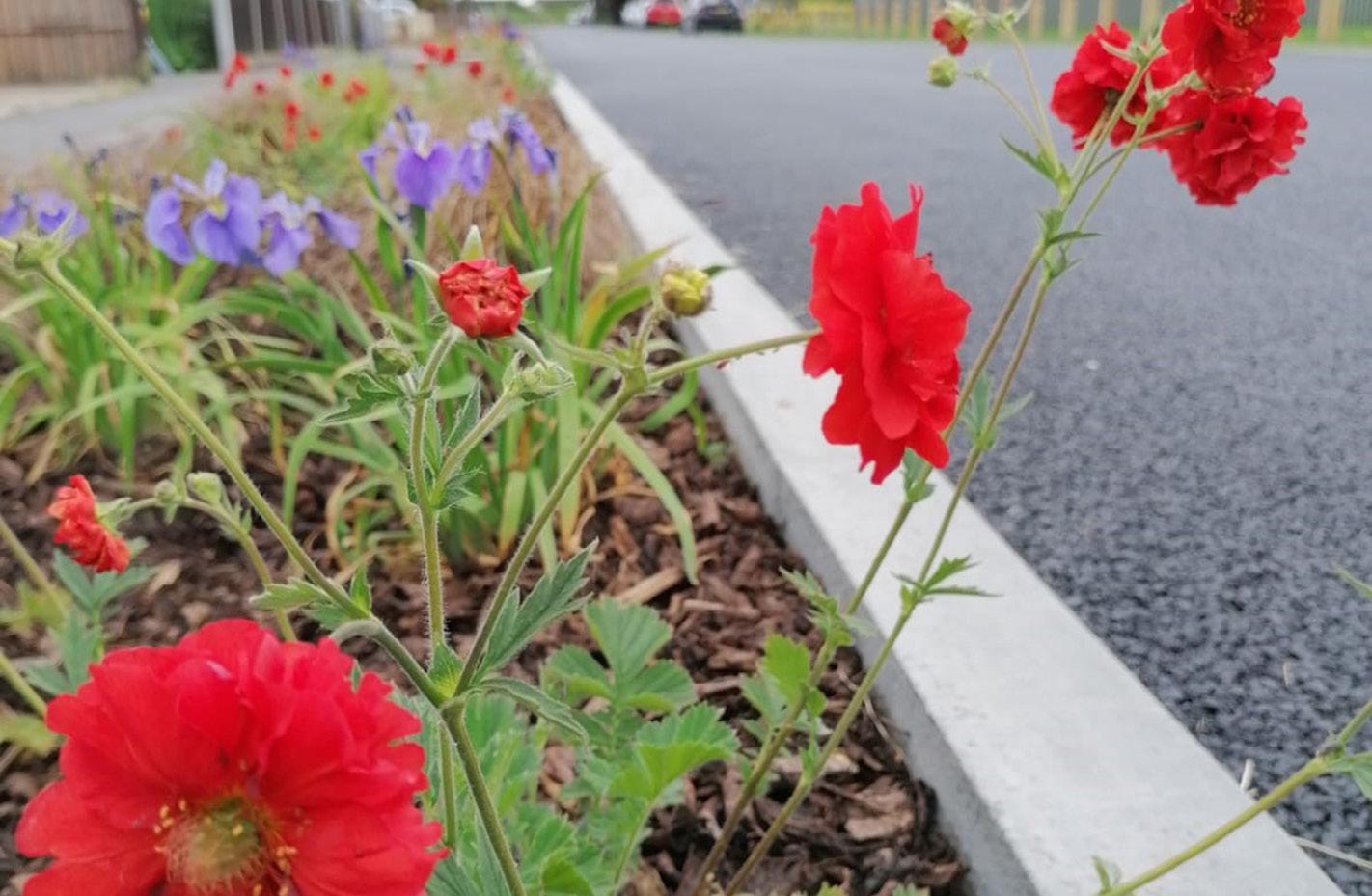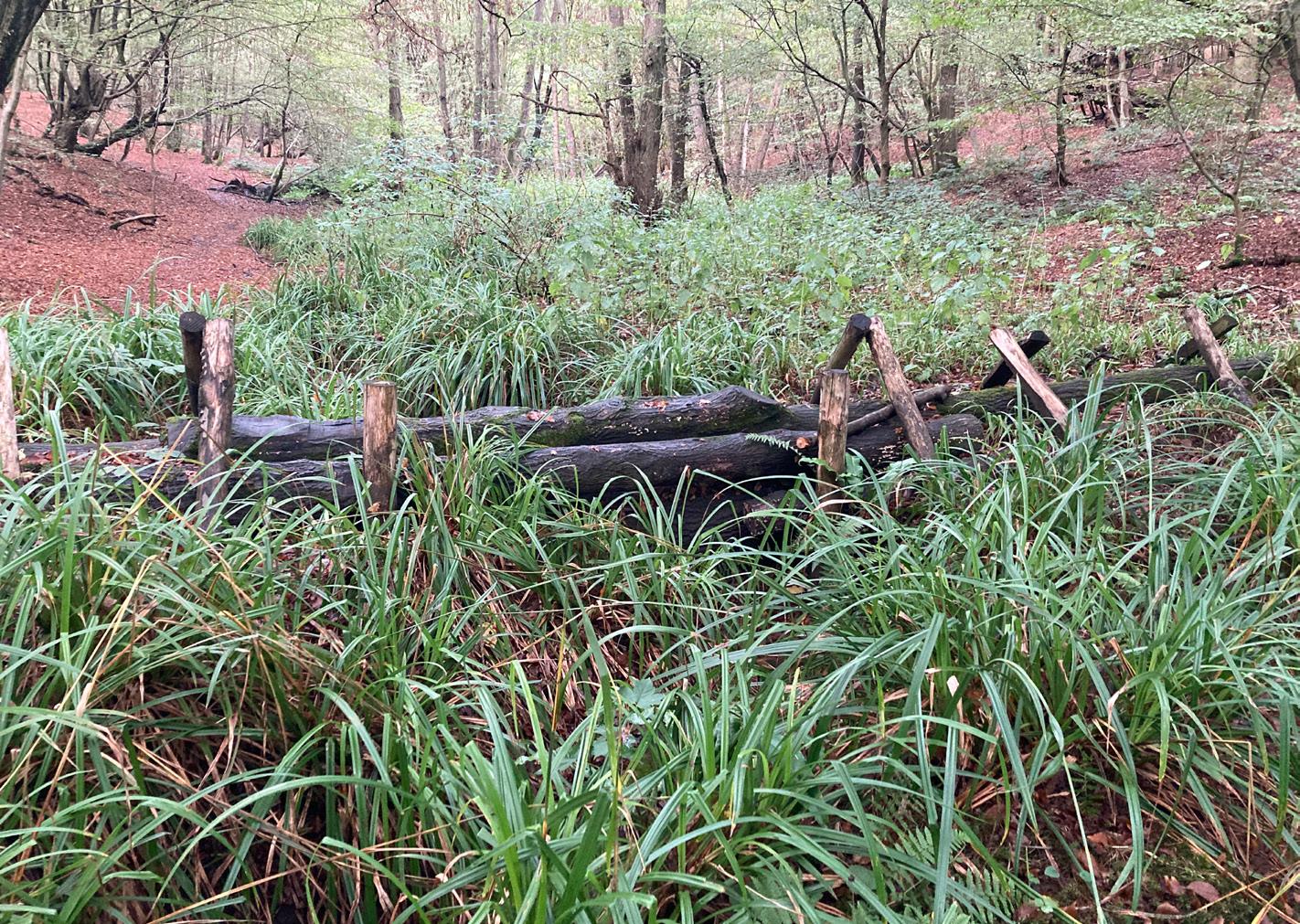
2 minute read
Flood management, moving from grey to green
Did you know that UK’s approach to flood management has changed? Previously hard grey infrastructure, such as levees, were relied on to ‘hold back water’ and prevent flooding. However, this just moved the problem elsewhere, resulting in needing high defenses. Now we’re combining soft green infrastructures, such as marshes and swales - which are shallow, broad and vegetated channels - to hold excess water within the landscape.
Our modern landscape is very different from 100 years ago. Urbanization has resulted in the loss of flood plains and the creation of hard surfaces that don’t absorb water. Urbanization, combined with trends in climate change, has created an environment highly susceptible to flooding. To manage flooding sustainably means changing our relationship with nature, which we can do by restoring the natural functions of rivers and flood plains.
Natural flood management and ‘green infrastructure’ involves utilising nature to soak and hold water in the landscape, like a sponge. Measures include:
• Leaky dams. These are log piles placed like steps along a watercourse which slow the flow of water. This allows the surrounding landscape to soak up water and helps to restore wetlands. You can visit leaky dams at Harlow, as well as Thorndon and Weald Country Parks and in Wivenhoe.
• Trees. Leaves, branches and bark slow the rain before it hits the ground. The tree root systems help water penetrate the soil which reduces run-off. The Essex Forest Initiative is planting native water-loving trees, such as hawthorn, alder and elder across the county.
• Retention ponds, rain gardens and wetlands hold water in wet periods and release it in dry spells. Why not visit the rain gardens in Danbury and the retention ponds at Basildon University Hospital?
Slowing and reducing the flow of surface water makes flooding more manageable while allowing the environment to flourish. To understand more about the benefits of natural flood management visit: www.catchmentbasedapproach. org/learn/what-is-naturalflood-management
The floods team
The Essex Flood and Water Management team investigate and assess flood risk across the county, including flooding from surface, ground and existing watercourses, and prepare strategies and actions to reduce flood risk. To find out your flood risk use this online map: www.flood.essex.gov.uk/knowyour-flood-risk/check-if-you-re-atrisk-of-flooding
What can you do at home?
How your home and garden is designed can reduce the risk of flooding. Small actions, if done by many people, can significantly reduce flood risk.
To ‘slow the flow’ and reduce your flood risk simply:
• Redirect your gutter to drain into a water butt or rain garden. Rain gardens are small depressions in the ground that act as an infiltration point and feature native flora.

• Install a water butt and make a pledge to yourself to empty it regularly – Essex residents may be eligible for a subsidy at www.GetComposting.com
• Change the material of your driveway or patio to a permeable surface like gravel, as it allows water to soak through. Alternatively, use pavers with gaps that allow water to drain into the earth.
• If you have ditches on your property keep them clear.

Personal flood protection
• If you experience flooding or live in a critical drainage area you may eligible for a grant to cover the cost of house protection including flood doors and barriers.
For more information and guidance to reduce flood risk visit: www.flood.essex.gov.uk










